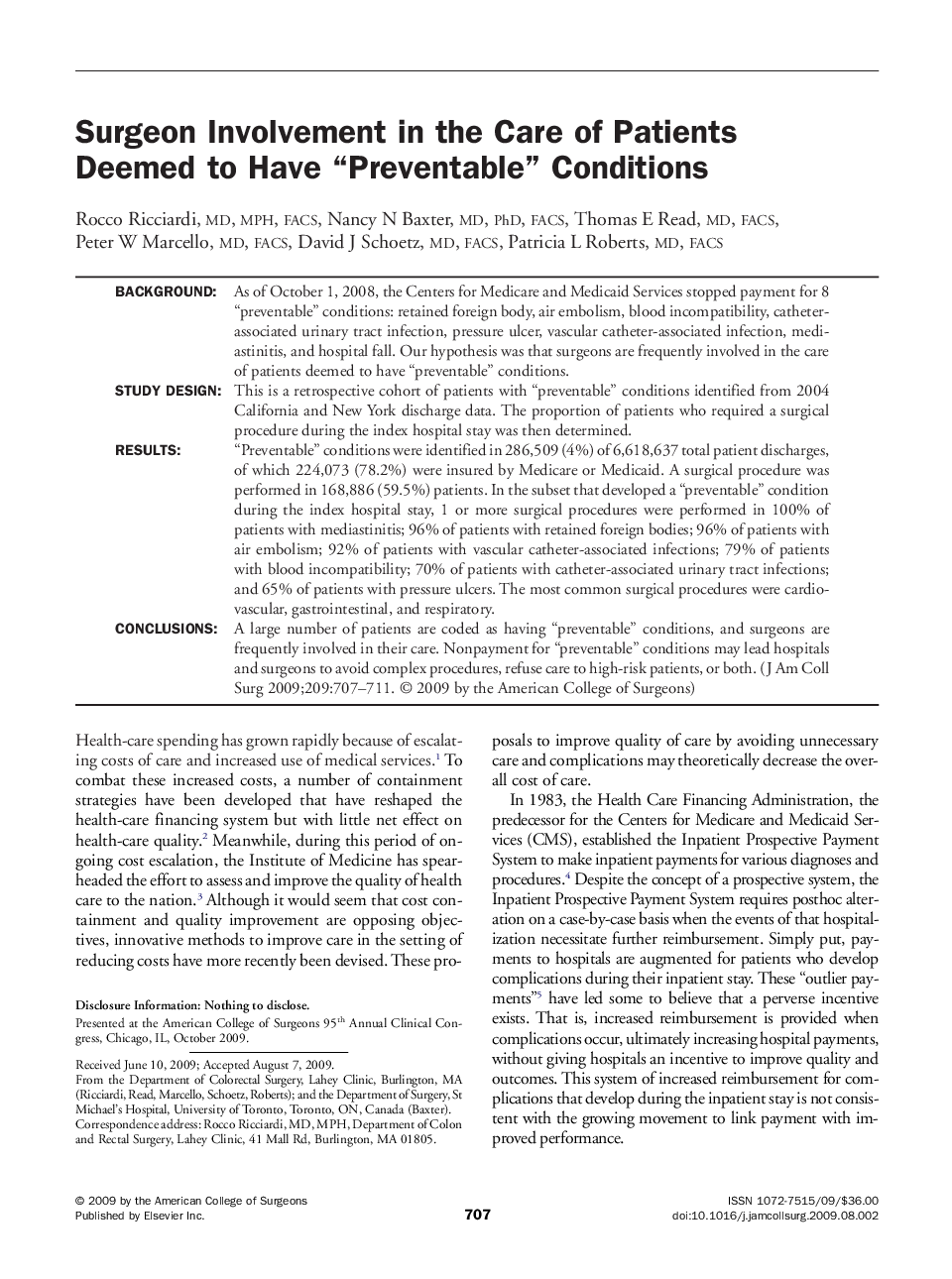| Article ID | Journal | Published Year | Pages | File Type |
|---|---|---|---|---|
| 4293683 | Journal of the American College of Surgeons | 2009 | 5 Pages |
BackgroundAs of October 1, 2008, the Centers for Medicare and Medicaid Services stopped payment for 8 “preventable” conditions: retained foreign body, air embolism, blood incompatibility, catheter-associated urinary tract infection, pressure ulcer, vascular catheter-associated infection, mediastinitis, and hospital fall. Our hypothesis was that surgeons are frequently involved in the care of patients deemed to have “preventable” conditions.Study DesignThis is a retrospective cohort of patients with “preventable” conditions identified from 2004 California and New York discharge data. The proportion of patients who required a surgical procedure during the index hospital stay was then determined.Results“Preventable” conditions were identified in 286,509 (4%) of 6,618,637 total patient discharges, of which 224,073 (78.2%) were insured by Medicare or Medicaid. A surgical procedure was performed in 168,886 (59.5%) patients. In the subset that developed a “preventable” condition during the index hospital stay, 1 or more surgical procedures were performed in 100% of patients with mediastinitis; 96% of patients with retained foreign bodies; 96% of patients with air embolism; 92% of patients with vascular catheter-associated infections; 79% of patients with blood incompatibility; 70% of patients with catheter-associated urinary tract infections; and 65% of patients with pressure ulcers. The most common surgical procedures were cardiovascular, gastrointestinal, and respiratory.ConclusionsA large number of patients are coded as having “preventable” conditions, and surgeons are frequently involved in their care. Nonpayment for “preventable” conditions may lead hospitals and surgeons to avoid complex procedures, refuse care to high-risk patients, or both.
